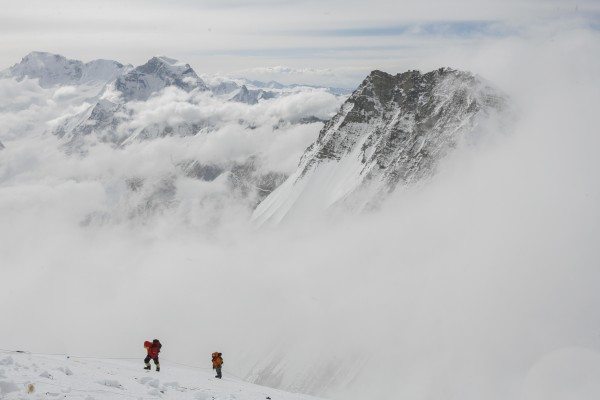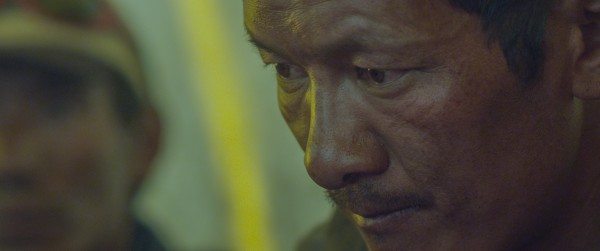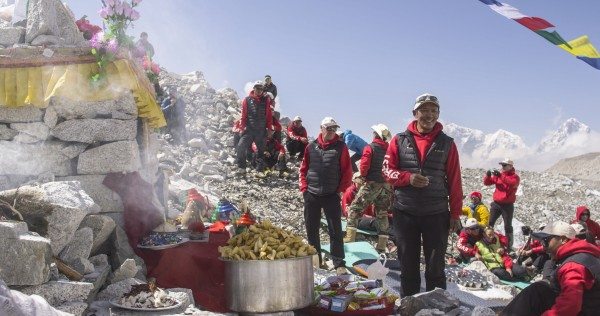A new film, SHERPA: Trouble on Everest brings us the story of climbing Everest from the perspective of the high-altitude Himalayan workers. It reveals a fascinating, compelling and often tragic history from the first Sherpa to summit Everest, Tenzing Norgay, to the more turbulent recent years.
I was given access to review the film before it comes cinema from December 15. It will arrive in Scotland in January.
2-7 January – Glasgow Film Theatre
9-14 January – Belmont Filmhouse, Aberdeen
18 – 24 January – Filmhouse, Edinburgh.
I was fascinated by the film and learned a great deal about the incredible Himalayan people, who, for more than 60 years, have risked their lives over and over again to assist international climbers (known as foreigners) in their pursuit of Everest’s summit. Sadly, many Sherpas have lost their lives. Traditionally, they have also received low wages in relation to their dangerous work and, unsurprisingly, they have begun to fight for more rights, better pay and insurance.
In addition, the filming of the Himalyan landscape is breath-taking. Seeing, for example, the Khumbu Icefall at such close range was awe-inspiring and terrifying.
Sherpa (noun)
- An ethnic group: a Himalayan people living on the borders of Nepal and Tibet
- A job description: renowned highly skilled high-altitude workers in the Himalayas.
Sherpa: the film. A synopsis
In 2013, international news channels brought us unsettling stories of an alleged brawl on Everest between Sherpas and climbers. But this didn’t sit well with us. When we think of Sherpas, we picture happy and smiling people who work tirelessly and selflessly to aid climbers in their pursuit of the ultimate summit. Yet, the news reported an angry mob of Sherpas.
In stark contrast, in 1953, New Zealander Edmund Hillary and Sherpa Tenzing Norgay had reached Everest’s summit in a spirit of co-operation and brave optimism. Yet now, apparently, climbers and Sherpas were trading insults – and even blows.
The Sherpa film-makers decided to investigate. They set out during the 2014 Everest climbing season to listen to what the Sherpas had to say and to make a film form their point of view.
The film joined a commercial expedition run by Himalayan veteran Russell Brice and his team of 25 climbing Sherpas. Russell has guided more expeditions on Everest than anyone. However, as the film showed, he now finds himself trapped on a fault line between the aspirations of his clients and the assertive demands of his Sherpas.
Crucial to Brice’s operation is his Sherpa leader Phurba Tashi. The film hoped to witness Phurba’s world record-breaking attempt to summit Everest for the 22nd time.
Instead, the film-makers happened upon a tragic season on Everest. This was the year when 16 Sherpas were killed in an ice fall. At 6.45am on April 18, a massive block of ice crashed down on to the climbing route through the Khumbu Icefall. It was the worst tragedy in the history of Everest.
The disaster provoked a huge reappraisal about the role of the Sherpas.
The work of the Sherpas is highly dangerous. Yet with few other economic opportunities available, supporting foreigners to climb Everest is an alluring career. It brings money but huge risks.
Until now I had not fully understood the work of the Sherpas. The film showed how they must take disproportionate risk, carrying huge loads to stock and build each of the camps on Everest. These are the camps that the foreign climbers will stay at during their bid for the summit.
Everyone who pursues the summit of Everest from the south side has to head through the treacherous Khumbu Icefall, literally a shifting river of ice. Foreign climbers do this twice (once up and once down), yet Sherpas are required to make up to 30 highly risky journeys. In an attempt to lessen the risk they do these trips at night when the temperature is lower and the ground is harder.
The ice fall tragedy hit while the Sherpas were carrying out one of these “duty” walks through the Khumbu.
The film reveals how the raw emotion in the wake of the tragedy turned to bitter anger and resentment. All the tensions that had been building over previous years exploded and played out in front of the cameras.
It’s an intriguing, compelling, thought-provoking and fascinating film and tells a story that, in my opinion, needed to be told. See what you think. Visit SHERPA film for listings.
SHERPA will also be broadcast globally on Discovery Channel in 2016.




